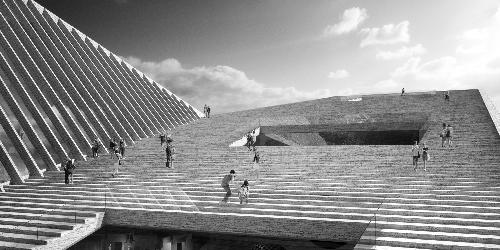21 Apr 2015
Snøhetta and SANAA are head to head in final competition for Budapest's Ludwig Museum job
BY Tom Anstey

Norwegian architecture firm Snøhetta and Japanese design studio SANAA have both been awarded first place in a contest to design the New National Gallery and Ludwig Museum in Budapest, Hungary.
Part of plans for Europe’s largest museum development, the announcement is the final piece of the puzzle in Budapest's HUF75bn (US$277m, €235m, £183m) cultural quarter.
While both firms have been named winner of the contest, only one of the two designs will be built. The winning design will join Vallet de Martinis DIID Architectes’ Museum of Ethnography, Sou Fujimoto Architects’ House of Hungarian Music, as well as the PhotoMuseum and Museum of Hungarian Architecture – both designed by Hungarian firm KÖZTI Architects & Engineers.
Snøhetta’s plans would see the museum and gallery built under one roof, with the site also doubling as a grand public terrace. The 51,000sq m (549,000sq ft) development would, according to Snøhetta: “Symbolise the meeting point of two art institutions, the meeting of light and earth at the horizon simultaneously resolving practicalities of daylighting and embodying gravity at the meeting of the Ludwig Museum and the New National Gallery.”
SANAA’s plans envision an “extension to the park” with the design using a roof with overlapping curved planes.
"Ours is a contemporary form of public space – one where city, gardens and exhibition rooms become part of an experiential whole," said the studio. "It is a museum that fluctuates with seasonal shifts."
The tie between the two design teams was the result of a second competition, after the initial contest found no suitable submissions among 80 entries. Project Commissioner László Baán said that the winning entry “would be a modern, contemporary building of outstanding architectural value that meets 21st-century requirements and is worthy both for the City Park and for one of the most important public collections of Hungary".
Built within the framework of Budapest’s largest park, Városliget, the development will see old buildings onsite demolished, with around 65 per cent of the park’s green space retained. Work on the development is expected to start in 2016, with the museum quarter to be open by March 2018.
Close Window